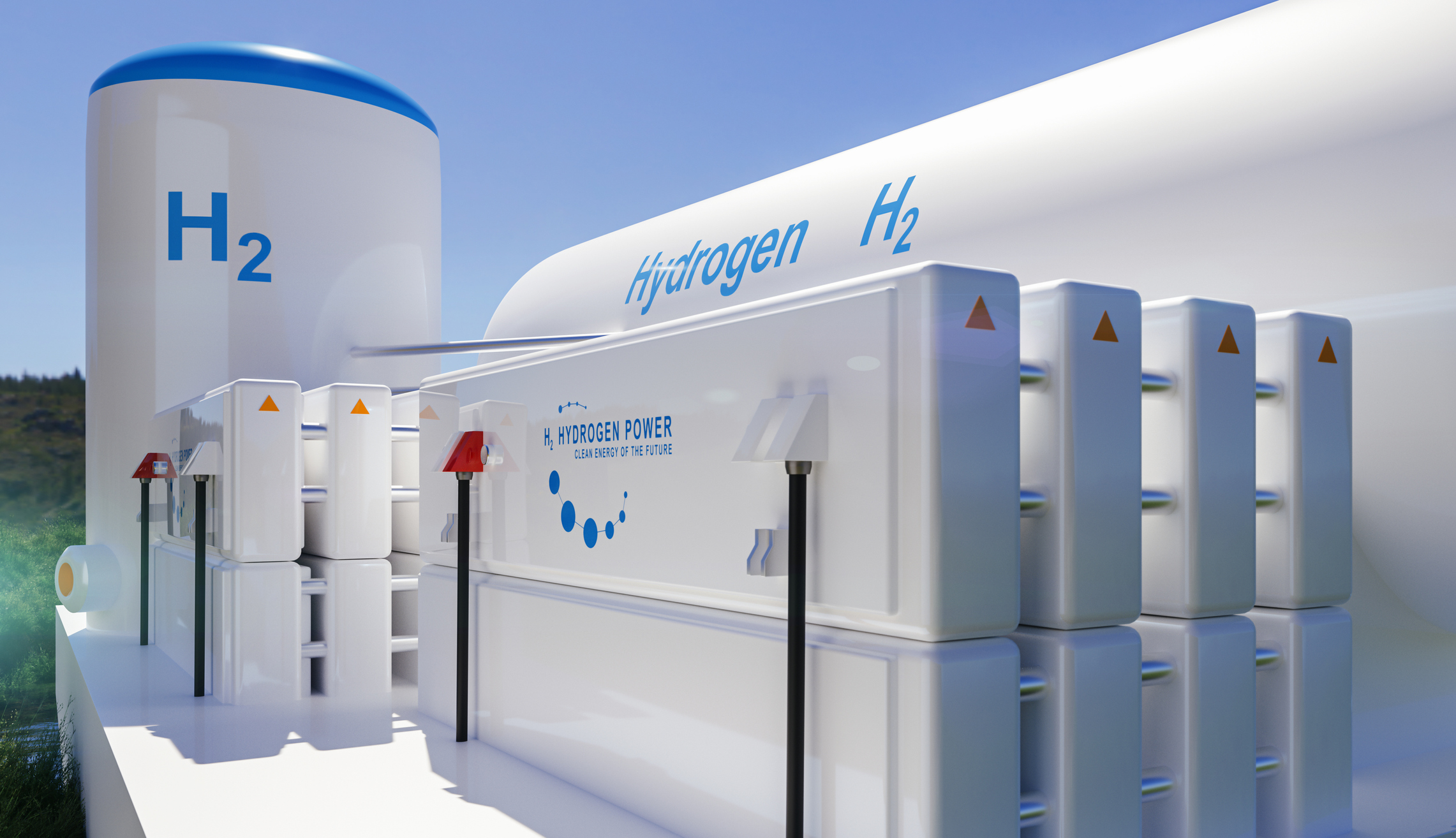
The Hydrogen Energy Strategy aims to apply advanced global technologies in the production of green hydrogen energy by 2030, as well as hydrogen energy technologies from other fuel sources using CCS/CCUS in Vietnam.

On February 22, in Hanoi, Minister of Industry and Trade Nguyễn Hồng Diên presided over the Conference on the Implementation of the Hydrogen Energy Strategy.
This was the first meeting to implement Decision No. 165/QĐ-TTg, issued on February 7, 2024, by the Prime Minister, approving Vietnam’s hydrogen energy development strategy until 2030, with a vision to 2050.
According to Decision No. 165, Vietnam aims to produce hydrogen from renewable energy and other carbon capture processes, with a capacity of 100,000-500,000 tons/year by 2030, increasing to 10-20 million tons by 2050. This green energy source will play a significant role in achieving the country’s net-zero emissions target.
The strategy outlines the overall objective of developing Vietnam’s hydrogen energy ecosystem based on renewable energy. This includes production, storage, transportation, distribution, domestic use, and export, with synchronized, modern infrastructure contributing to energy security, the national climate change goals, green growth, and achieving net-zero emissions by 2050, in line with Vietnam’s commitments to a just and sustainable energy transition.
Vietnam also encourages investment in green hydrogen energy production for export, prioritizing energy security, national defense, and economic efficiency. By 2050, the goal is to form a comprehensive industrial energy ecosystem based on renewable energy, new energy, and green hydrogen, aiming to become a clean energy and green hydrogen export hub in the region.
Encouraging Hydrogen Energy Use Across All Sectors
At the conference, Nguyễn Việt Sơn, Director of the Oil and Gas Department, presented the key contents of the Hydrogen Energy Development Strategy for Vietnam until 2030, with a vision to 2050:
The strategy for hydrogen energy production must be aligned with the National Energy Strategy and related plans, while also being dynamic and adaptable to global energy transitions.
Hydrogen energy production will develop along the value chain, including production, storage, transportation, distribution, and use, contributing to energy security, greenhouse gas emission reduction, and promoting a green, circular, and hydrogen economy.
The production of hydrogen energy will follow a rational roadmap, aligned with Vietnam’s energy transition path.
Hydrogen energy use is encouraged across all sectors of the economy to reduce greenhouse gas emissions. Suitable policies and incentives will be developed to promote hydrogen energy use in areas like electricity generation, transportation, and industries (steel, chemicals, oil refining).
International cooperation will be enhanced to share knowledge and experiences in developing the hydrogen energy ecosystem.
According to Nguyễn Việt Sơn, the strategy also sets a general goal of developing a hydrogen energy ecosystem, including production, storage, transportation, distribution, and use, with modern, synchronized infrastructure, based on renewable energy, contributing to energy security, national climate change goals, green growth, and the net-zero emissions target by 2050.
Green Hydrogen Energy Production by 2030
Specifically, in terms of hydrogen energy production, the strategy aims to apply advanced global technologies by 2030 in producing green hydrogen energy, as well as hydrogen energy technologies from other fuel sources using CCS/CCUS in Vietnam.
It aims to produce 100,000-500,000 tons/year of hydrogen from renewable energy and other carbon capture processes by 2030.
By 2050, Vietnam will aim to master advanced technology in producing green hydrogen energy and other hydrogen energy technologies using CCS/CCUS from various fuel sources.
The goal is to produce 10-20 million tons/year of hydrogen from renewable energy and other carbon capture processes by 2050.
The strategy outlines seven task groups and solutions for implementing the hydrogen energy strategy: mechanisms and policies, investment and finance, science and technology, human resource development, environmental protection and sustainable development, international cooperation, and communication.

Vietnam Becomes One of the First 40 Countries to Issue a Hydrogen Strategy
At the conference, Minister Nguyễn Hồng Diên concluded that the Politburo had mentioned the development of hydrogen energy in Resolution No. 55-NQ/TW dated February 11, 2020, on the orientation of Vietnam’s national energy strategy until 2030, with a vision to 2045. The Government also referenced it in the National Energy Master Plan and the National Power Development Plan for the 2021-2030 period, with a vision to 2050.
Based on these directives, the Ministry of Industry and Trade quickly coordinated with other central ministries and localities to research and develop a hydrogen energy development strategy. This process was careful, thorough, and included input from leading scientists, experts, and international organizations. The strategy was approved by the Prime Minister through Decision No. 165/QĐ-TTg on February 7, 2024, making Vietnam one of the first 40 countries to issue a hydrogen energy development strategy.
Minister Diên emphasized that the Government’s approval of the hydrogen energy development strategy is crucial, opening up new opportunities for Vietnam’s energy sector to develop sustainably, along with abundant renewable energy sources (solar, offshore wind, etc.). This will help Vietnam fulfill its commitment to carbon neutrality by 2050, meet domestic and export needs, and align with the Party and Government’s energy transition vision, as well as the global trend and Vietnam’s COP26 commitments.
To successfully implement the strategy, the Minister called on central ministries and localities to effectively execute the tasks assigned by the Prime Minister in the approved strategy, focusing on key areas:
First, update the directives and orientations outlined in the strategy and integrate them into related national and provincial plans, ensuring synchronization and consistency; review and adjust sectoral plans in localities to accommodate hydrogen energy investment projects.
Second, study and propose new or amended legal frameworks and policies, especially those encouraging hydrogen fuel use in green transport infrastructure; develop national standards for hydrogen production, storage, and transportation.
Third, build national science and technology programs and train a high-quality workforce for the new energy sector, including hydrogen energy.
For energy corporations and companies (EVN, PVN, TKV, Chemicals, Petroleum, etc.) and industry associations, the Minister urged them to implement the tasks and solutions outlined in the strategy.
They should proactively participate with relevant authorities in developing feasible regulations and policies to promote hydrogen energy development. Furthermore, they should adjust their business development plans to align with the strategy and increase both domestic and international capital for hydrogen energy projects, particularly those involving green hydrogen and green ammonia production.
For the Ministry of Industry and Trade’s relevant departments, the Minister urged effective communication about the strategy’s role, importance, and core elements to all sectors, the business community, and the public, fostering societal consensus and commitment to achieving the strategy’s goals.
Finally, they must promptly draft and submit detailed action plans to implement the strategy’s goals and solutions, ensuring consistency and coordination throughout the process.
Source: Government News




